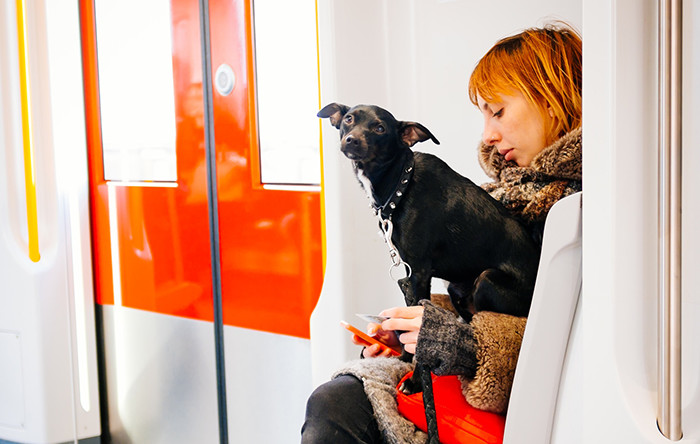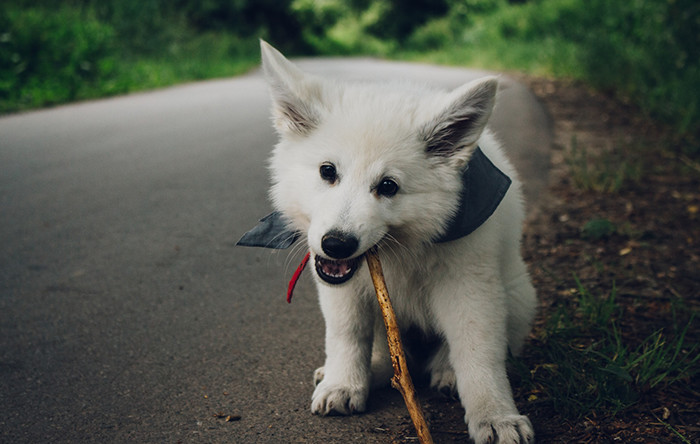It seems like every time you see a dog, your child’s reaction is to go running over to it—whether it’s wagging its tail or baring its teeth. If that’s the case, it’s time to teach your child dog safety, which can go a long way toward keeping him or her safe around Fido and Rover.
Dogs are everywhere—walking the neighborhood with their owners, at parks, outside playgrounds, and in public places. It is estimated that there are more than 70 million dogs in the United States, and about 37 to 47 percent of households have a dog, according to the American Society for the Prevention of Cruelty to Animals.
With all those dogs, pet safety and dog safety should be something all children learn. Read on to find out five safety tips to teach your child to be safe and well mannered around dogs.
1. Always ask the owner

Before touching a dog, teach your child to always ask the owner whether it’s okay to approach the animal and pet it. Tell your child it’s important to talk to the owner first, because even if a dog looks friendly, it might not be.
Not only can the owner can tell you if a dog is friendly, he or she can share if the dog likes to be pet in a certain place, is shy, or is known to lick faces. This kind of information can help your child interact with the dog in a positive way.
Some dogs might be in training, are fussy, or just don’t like people. If an owner says that your child should not approach, heed that warning. Explain to your child that some dogs are to be enjoyed by looking at them, and not by touching them. Instead, engage with the owner and find out the dog’s breed, age, and other facts.
2. Always greet a dog the same way
After a dog owner has deemed the dog safe to pet, your child should approach the dog the same way each time, practicing good dog safety.
How to approach a dog:
- Walk slowly, don’t run, toward the dog
- Offer your outstretched hand to the dog, palm facing down
- Let the dog sniff your hand before petting it
- Once the dog has finished sniffing, you can pet it
- Don’t make sudden movements around the dog, and always be gentle
Just as you teach your child to greet other kids and adults in a certain way, teaching him or her the right way to greet a dog is just as important.
3. Act calm around dogs
When you’re in the presence of dogs or other animals, even friendly ones, teach your child that he or she always need to be calm.
How to act around a dog:
- Remain calm
- Never run away from or make sudden movements around a dog
- Don’t make loud noises
- Don’t play rough
Teaching your child not to run around dogs, or away from dogs, is an important lesson. Running can trigger a prey drive in some dog breeds, or can signal to a dog that your child wants to play. “Play” for a dog can mean knocking down your child, or nipping (biting but not baring down, in a playful way).
If your child can’t control his or her exuberance around dogs or other animals, it might be best to wait until he or she is older before letting interactions with dogs occur.
4. Be careful around dogs with treats or toys

If a dog has a treat or toy, teach your child never to take such an item from a dog. Dogs can get possessive of food and toys, and can react by biting, or by trying to get the toy back, and in the process could cause harm to your child.
Dogs can also be territorial of their houses. If a dog is tied up outside its house, even if the dog has been friendly before, take care in approaching as it might see you and your child as a threat.
5. Learn how dogs communicate
Teach your child how dogs communicate, and that a dog’s body language can tell them whether the dog is happy, scared, or mad.
- A dog is happy when: it wags its tail, attempts to approach you in a friendly manner, or does a “play bow” by lowering its front legs while keeping its rear end upright.
- A dog is scared when: it backs away, tucks its tail between its legs, or growls
- A dog is mad when: it barks, bares its teeth, or the hair stands up along its spine
If a dog is exhibiting the signs of being scared or mad, never approach. Teach your child to give that dog plenty of space.
It’s always best to supervise your child in the presence of a dog, to make sure both parties are happy and acting friendly. If you have a child under age five, pets shouldn’t be left alone with your little one.
Practice these pet safety and dog safety tips and your interactions with animals should go smoothly! Looking for more tips to keep your kids safe? Learn eight safety basics your child should know.


